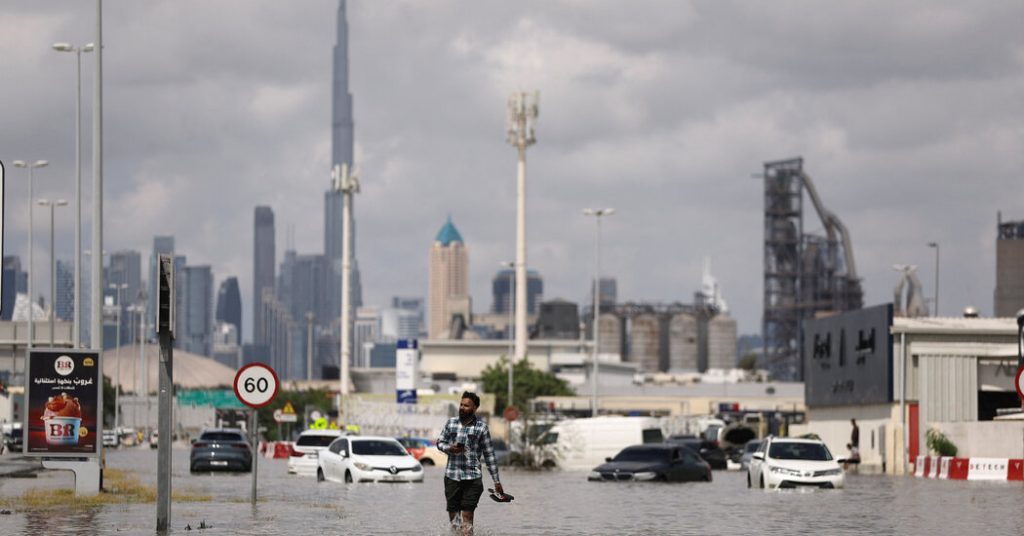Heavy rain in the United Arab Emirates and Oman this week has caused widespread devastation, with at least 20 people reported dead. Experts attribute the severity of the storm to climate change, with the U.A.E. experiencing its largest rainfall in 75 years. In Oman, flooding in the capital city of Muscat turned streets into raging rivers, resulting in 19 fatalities. In the U.A.E., one person died in Ras Al-Khaimah, and videos showed cars submerged on flooded highways and planes struggling on waterlogged runways. Dubai International Airport, a major transportation hub, faced delays and cancellations but has since resumed some flights, although disruptions still linger.
The relentless rainfall in Oman and the U.A.E. has highlighted the impact of climate change on extreme weather events. The storm, described as supercharged by climate change, caused widespread flash flooding in both countries, leading to numerous fatalities and significant damage. The severity of the storm is evident in the unprecedented rainfall levels recorded in the U.A.E., prompting authorities to urge residents to stay indoors. The challenging conditions affected transportation systems, with Dubai International Airport facing delays and shortages of refreshments due to flooded roads disrupting deliveries.
The situation in Oman, where the storm first hit, was particularly severe, with the capital city of Muscat experiencing extensive flooding and loss of life. The images of streets transformed into raging rivers and cars submerged on highways underscore the destructive power of the storm. In the U.A.E., the city of Ras Al-Khaimah also suffered casualties, emphasizing the widespread impact of the extreme weather event. While the rains have subsided, the aftermath of the storm continues to disrupt daily life, with transportation networks struggling to return to normalcy amidst ongoing challenges caused by the flooding.
As the U.A.E. and Oman grapple with the aftermath of the devastating storm, concerns about climate change and its role in driving extreme weather events have come to the forefront. The unprecedented levels of rainfall in the U.A.E., coupled with the widespread flooding and disruptions to critical infrastructure, serve as a stark reminder of the urgency to address climate change and its impact on vulnerable regions. The resilience of communities in facing such extreme events is being put to the test, with authorities working to manage the fallout from the storm and mitigate its long-term effects on affected populations.
The immediate response to the storm in Oman and the U.A.E. has been focused on rescue and relief efforts, with emergency services working to assist those affected by the flooding. The tragic loss of life and widespread damage caused by the storm underscore the need for preparedness and mitigation measures to address the growing risks posed by climate change. As extreme weather events become more frequent and severe, vulnerable regions like the U.A.E. and Oman must prioritize adaptation strategies to build resilience and protect communities from the impacts of climate change. The recent storm serves as a sobering reminder of the challenges posed by a changing climate and the importance of taking decisive action to address its consequences.
In the aftermath of the devastating storm, the U.A.E. and Oman are left to grapple with the aftermath of widespread flooding, loss of life, and disruptions to critical infrastructure. The impact of climate change on extreme weather events has been starkly illustrated by the severity of the storm, which experts have described as supercharged by climate change. As communities work to recover from the storm and rebuild in its wake, the need to address the root causes of climate change and its effects on vulnerable regions like the U.A.E. and Oman becomes increasingly urgent. The resilience and response of authorities and communities in the face of such challenges will be crucial in mitigating the impacts of future extreme weather events and building a more sustainable future for all.


